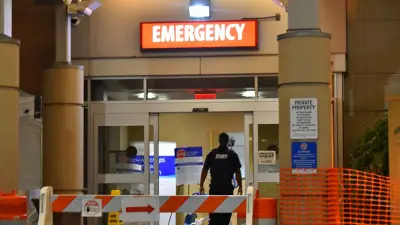Opinion: Communities and patients lose when maternity wards close in California

A protection officer enters the Scripps Mercy Hospital San Diego crisis entrance in File photo by Chris Stone Times of San Diego A insufficient months ago I worked my final night as an OB-GYN on labor and delivery at USC Verdugo Hills Hospital in the Los Angeles County city of Glendale I demanded my unit of doctors nurses and other staff to get together one last time and connect before we shut down the unit There were no patients in the labor rooms no newborns in the nursery and the halls were silent So different from the nights when we pulled together to help so plenty of and were proud every time we assisted a new mother going home with her baby The ambulances had already been advised to take pregnant patients elsewhere Patients had been rescheduled at other hospitals In the quiet of the postpartum unit several staff shared that they had been born here others advised stories of celebrating the births of friends and family members Multiple talked about how meaningful it was to be able to show their children the cribs they had been warmed in after birth It reminded me how when I was a child each time we drove past the hospital where I was born I waved believing the bricks remembered me too Currently as hospitals and even more labor and delivery units close in California and across the country multiple will not have those memories Even more tragic is that pregnant patients in multiple areas of the state will have a much harder time having a safe birth Nearly labor and delivery units across California have closed since roughly of those were in Los Angeles County Typically when we think about maternity care access issues we think of rural areas where geography compounds long-standing problems Over half of rural counties across the U S are without access to obstetric care But according to up-to-date research one-third of urban U S hospitals did not offer obstetric services in California labor and delivery units are closing for several reasons Across the country reimbursement for obstetric services is not keeping pace with inflation forcing hospital administrators to decide if they can provide services that cost more than the payment they receive U S birth rates also are declining And the high cost of housing especially in places like California is pushing people to start families farther away from cities California labor and delivery units are closing at a rate three times faster than in other parts of the country Fewer hospitals means longer wait times for pregnant patients including at the exigency room where they will be increasingly forced to go instead of labor and delivery units Multiple emergency therapeutic provision providers without specially trained staff are ill-equipped to stabilize and treat pregnant patients During the winter months when a great number of patients present with COVID and flu markers urgency room waits can sometimes last for hours A pregnant woman might have complaints a stomach ache or various discharge that seem minor enough to put other patients ahead of her But these may in fact indicate a condition like preterm labor or ruptured membranes that requires urgent action Legislators at the state and federal levels are working to address these problems Last year the American College of Obstetricians and Gynecologists where I serve as a chair endorsed and the California State Legislature passed Assembly Bill the Reproductive Healthcare Exigency Preparedness Initiative Act to provide reproductive healthcare funding training and technical assistance for hospital emergency departments But the governor vetoed the bill due to budgetary issues In February a bipartisan group of U S senators introduced the Rural Obstetrics Readiness Act The decree would provide among other things funding and guidance to create obstetric crisis training programs for rural wellbeing care facilities that do not have dedicated labor and delivery units Last fall senators put forward the Keeping Obstetrics Local Act to help rural and high-need urban hospitals deal with the high cost of operating a labor and delivery unit Meanwhile labor and delivery units continue closing In the part of Los Angeles County that USC Verdugo Hills Hospital has served other hospitals provide maternity services So our patients will not feel the worst effects of the loss of a labor and delivery unit But the nurses have moved on and a great number of of the doctors have opened new offices elsewhere There remains a hole in this district and memories lost Unless we prioritize keeping labor and delivery units open Californians will continue to sacrifice pieces of their past and the ability to safely give birth close to home for years and years to come John McHugh is an obstetrician who has practiced for decades in Southern California He is chair of the American College of Obstetrics and Gynecology for District IX which includes California He wrote this for for Z calo Society Square an ASU Media Enterprise publication


